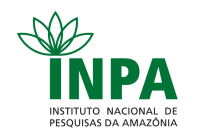Corpo Discente - Egressos
Francisco dos Santos Silva
| Título | BACTÉRIAS ISOLADAS DO MARACUJAZEIRO COM POTENCIAL DE BIOCONTROLE DA Xanthomonas axonopodis pv. passiflorae (Xap) (MANCHA-BACTERIANA) | ||||||||||||||||||||||||
| Data da Defesa | 31/08/2023 | ||||||||||||||||||||||||
| Download | Visualizar a Tese(2.69MB) | ||||||||||||||||||||||||
Banca
| |||||||||||||||||||||||||
| Palavras-Chaves | Antibiose; Maracujá; Fosfato; APCI; biossurfactantes | ||||||||||||||||||||||||
| Resumo | O maracujá amarelo Passiflora edulis Deg. f. flavicarpa Sims é a espécie mais importe dentro do gênero Passiflora, pois é uma das culturas mais comercializadas no Brasil. Destaca-se por ser uma planta característica de clima tropical com ampla distribuição geográfica e sua produção é destinada para a indústria alimentícia, cosmética e farmacológica. Mesmo se tratando de uma espécie com a importância supracitada, verifica-se na literatura registros de pragas que atacam a cultura, a saber fungos e bactérias que ainda não possuem um produto que consiga controlar ou eliminá-los de forma eficaz, diminuindo assim os prejuízos para os agricultores. A bactéria responsável pelos maiores danos no maracujazeiro é a Xanthomonas axonopodis pv. passiflorae que causa a doença Mancha-bacteriana. Trabalhos publicados que propõe formas de controles dessas doença são cada vez mais frequentes, principalmente quando aplica-se microrganismos vivos nesse controle, caracterizados como biocontrole. Objetiva-se com esse estudo realizar a seleção massal de bactérias residentes no filoplano do maracujazeiro como possível agente de biocontrole da Mancha-bacteriana, que tem como agente causal a bactéria Xanthomonas axonopodis pv. passiflorae recorrente no estado de Roraima. As folhas de maracujazeiro foram coletadas no estado de Roraima e levadas para o Laboratório de Fitopatologia da EMBRAPA Roraima, onde foram isoladas as bactérias candidatas e realizou-se a caracterização morfológica e os testes: com compostos termoestáveis, em casa de vegetação, para produção de Ácido Indol Acético (AIA), e solubilização de fosfato de alumínio e ferro. Obteve-se os seguintes resultados, 28 isolados bacterianos dos municípios de Roraima e a caracterização e classificação morfológica indicou que estas podem ser agrupadas, com destaque para a velocidade de crescimento, diferença na coloração e produção de muco. O teste com compostos termoestáveis destaca-se os isolados RR25, RR16, RR17, RR23, RR21, RR22, RR19, RR20, RR27, RR14, RR06, RR02 e RR04, que reduziram as unidades formadoras de colônias. Já o teste em casa de vegetação, os melhores resultados foram apresentados pelos isolados RR03, RR07, RR09, RR16, RR21 e RR23, ao se comparar com a testemunha após 14 dias de avaliação. Nos testes de promoção de crescimento, a produção de AIA não foi significativa, podendo observar a produção considerável para RR12, RR15 e RR18. Na solubilização do fosfato de alumínio, apresentaram resultados significativos os isolados RR04, RR05, RR09, RR16 e RR24. O teste para solubilização de fosfato de ferro, não apresentou resultado satisfatório, pois não verificou-se a formação de halo nas placas de Petri. A análise do DNA a partir da região 16S rRNA, indicou que as bactérias pertencem a cinco espécies: Bacillus subtilis, B. stercoris, B, cereus, B. thuringiensis e B. paramycoides, que são amplamente aplicadas como controle biológica, devido sua capacidade de metabolização de substâncias biossurfactantes. As análises dos espectros de massa indicaram que as bactérias são capazes de metabolizar lipopeptídeos da classe dos surfactantes, principalmente as surfactinas, que são metabolizadas por bactérias do gênero Bacillus. Analisando os resultados, os isolados obtidos apresentam potencial para o controle de X. a. pv. Passiflorae em testes in vitro e in vivo, e associado a esse controle alguns dos isolados ainda podem ser usados no tratamento de sementes com o intuito de conseguir uma maior eficiência na solubilização de fosfato, principalmente na forma de fosfato de alumínio, proporcionando a produção de uma muda mais saudável e consequentemente mais resistente a ataque da doença, essa característica se deve as bactérias Bacillus, que possuem como característica a produção de substâncias biossurfactantes. | ||||||||||||||||||||||||
| Abstract | The yellow passion fruit Passiflora edulis Deg. f. flavicarpa Sims is the most important species within the genus Passiflora, as it is one of the most commercialized crops in Brazil. It stands out for being a plant characteristic of the tropical climate with wide geographical distribution and its production is destined for the food, cosmetic and pharmacological industries. Even in the case of a species with the aforementioned importance, there are records of pests that attack the crop in the literature, namely fungi and bacteria that still do not have a product that can effectively control or eliminate them, thus reducing the damage. for farmers. The bacterium responsible for the greatest damage to passion fruit is Xanthomonas axonopodis pv. passiflorae that causes the disease Bacterial blotch. Published works that propose forms of control of these diseases are increasingly frequent, especially when live microorganisms are applied in this control, characterized as biocontrol. The objective of this study is to carry out a mass selection of bacteria residing in the passion fruit phylloplane as a possible biocontrol agent for bacterial leaf spot, which has the bacterium Xanthomonas axonopodis pv. recurrent passiflorae in the state of Roraima. The passion fruit leaves were collected in the state of Roraima and taken to the Laboratory of Phytopathology at EMBRAPA Roraima, where the candidate bacteria were isolated and morphological characterization and tests were carried out: with thermostable compounds, in a greenhouse, for the production of Indole Acetic Acid (IAA), and solubilization of aluminum and iron phosphate. The following results were obtained, 28 bacterial isolates from the municipalities of Roraima and the characterization and morphological classification indicated that these can be grouped, with emphasis on growth speed, difference in color and mucus production. The test with thermostable compounds highlights the isolates RR25, RR16, RR17, RR23, RR21, RR22, RR19, RR20, RR27, RR14, RR06, RR02 and RR04, which reduced the colony forming units. As for the test in a greenhouse, the best results were presented by the isolates RR03, RR07, RR09, RR16, RR21 and RR23, when compared with the control after 14 days of evaluation. In the growth promotion tests, the production of IAA was not significant, being able to observe the considerable production for RR12, RR15 and RR18. In the solubilization of aluminum phosphate, the isolates RR04, RR05, RR09, RR16 and RR24 presented significant results. The test for iron phosphate solubilization did not show a satisfactory result, as there was no halo formation in the Petri dishes. DNA analysis from the 16S rRNA region indicated that the bacteria belong to five species: Bacillus subtilis, B. stercoris, B. cereus, B. thuringiensis and B. paramycoides, which are widely applied as biological control, due to their ability to of metabolizing biosurfactant substances. The analysis of the mass spectra indicated that the bacteria are capable of metabolizing lipopeptides of the surfactant class, mainly surfactins, which are metabolized by bacteria of the genus Bacillus. Analyzing the results, the isolates obtained show potential for the control of X. a. pv. Passiflorae in in vitro and in vivo tests, and associated with this control, some of the isolates can still be used in seed treatment in order to achieve greater efficiency in phosphate solubilization, mainly in the form of aluminum phosphate, providing the production of a healthier seedling and consequently more resistant to the attack of the disease, this characteristic is due to the Bacillus bacteria, which have the characteristic of producing biosurfactant substances. | ||||||||||||||||||||||||
Parceiros

























